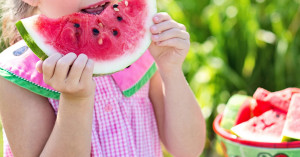Références bibliographiques-Nutrition et santé

Vous pouvez retrouver sur cette page les références bibliographiques utilisées dans les documents nutrition et santé de l’AVF.
Mon doc nutrition n°2 — Le fer
- Brenda Davis et Melina Vesanto, Becoming Vegan : Comprehensive Edition, The Book Publishing Campany, 2014, www.brendadavisrd.com
- ANSES — Agence nationale de sécurité sanitaire de l’alimentation, de l’environnement et du travail, 2016, Actualisation des repères du PNNS : élaboration des références nutritionnelles.
- « Position of the American Dietetic Association and Dietitians of Canada », dans Journal of the American Dietetic Association, juillet 2009, 109 : 1266–1282. Consultable également en anglais sur le site www.eatright.org
- VeganHealth.org, Nutrient Recommendations and Research, Iron, 2013.
- OMS, Centre international de Recherche sur le Cancer, 2015.
- D’après les bases de données du ministère américain de l’Agriculture, USDA, 2016, et de l’ANSES, Composition nutritionnelle des aliments, Table Ciqual 2016.
Mon doc nutrition n°3 — Le calcium
- « Position of the American Dietetic Association and Dietitians of Canada », dans Journal of the American Dietetic Association, juillet 2009, 109 : 1266–1282. Consultable sur https://www.em-consulte.com/article/491937/article/position-of-the-american-dietetic-association-vege
- ANSES — Agence nationale de sécurité sanitaire de l’alimentation, de l’environnement et du travail, juin 2016, www.anses.fr/fr/content/le-calcium.
- Michael J. Berridge, « The versatility and universality of calcium signalling », Nature Reviews Molecular Cell Biology, vol. 1, no 1, octobre 2000, p. 11–21.
- Jane E Kerstetter, Kimberly O. O’Brien et Karl L. Insogna, « Dietary protein, calcium metabolism, and skeletal homeostasis revisited », American Journal of Clinical Nutrition, vol. 78, no 3, 2003, p. 5845–5925.
- Léon Guéguen et Alain Pointillart, « The Bioavailability of Dietary Calcium », Journal of the American College of Nutrition, vol. 19, n° sup2, 2000, p. 1195–1365 (PMID 10759138), www.ncbi.nlm.nih.gov/pubmed/10759138.
- « Régime alimentaire, nutrition et prévention des maladies chroniques » — Rapport d’une consultation OMS/FAO d’experts, OMS, Série de Rapports techniques 916, Organisation mondiale de la Santé, 2003.
- “Calcium intake and prostate cancer — letter”, Cancer Epidemiology, biomarkers and prevention, http://cebp.aacrjournals.org/content/24/8/1297.
- Ministère américain de l’Agriculture, USDA, consultable sur www.nal.usda.gov/fnic/foodcomp/search
Mon doc nutrition n°4 — L’iode
- ANSES — Agence nationale de sécurité sanitaire de l’alimentation, de l’environnement et du travail, mai 2016, www.anses.fr/fr/content/iode
- ANSES — Agence nationale de sécurité sanitaire de l’alimentation, de l’environnement et du travail, novembre 2012, www.anses.fr/fr/content/sel-une-diminution-des-apports-malgré-tout-insuffisante
- Horton MK. et al., « CO-occurring exposure to perchlorate, nitrate and thiocyanate alters thyroid function in healthy pregnant women », Environ Res. nov 2015, https://goo.gl/BnqoKj
- Centre d’étude et de valorisation des algues : https://www.ceva-algues.com/
- Table de composition nutritionnelle Ciqual 2013 : https://pro.anses.fr/TableCIQUAL
Mon doc nutrition n°5 — les oméga‑3
- Informations générales sur les lipides et les oméga‑3 :
www.anses.fr/fr/content/les-acides-gras-om%C3%A9ga‑3
www.anses.fr/fr/content/les-lipides#_ftn1 - Informations plus complexes sur les lipides et les oméga‑3 :
www.anses.fr/fr/system/files/NUT2006sa0359Ra.pdf
www.anses.fr/fr/system/files/NUT-Ra-omega3.pdf - Autre document utile :
www.vrg.org/nutrition/2009_ADA_position_paper.pdf
Mon doc nutrition n°6 — Vitamine B12
- La liste des symptômes est détaillée sur www.vivelab12.fr/la-carence-en-b12
- Table Ciqual, https://ciqual.anses.fr/#/aliments/22000/oeuf-cru, et Nutritional Effects of Food Processing, http://nutritiondata.self.com/topics/processing
- « The prevalence of cobalamin deficiency among vegetarians assessed by serum vitamin B12 : a review of literature », Pawlak R., Lester S.E., Babatunde T., European Journal of Clinical Nutrition, 2014, 68 (5), p.541–548.
https://pubmed.ncbi.nlm.nih.gov/24667752/ - Actualisation des repères du PNNS : élaboration des références nutritionnelles, ANSES, décembre 2016, p.23.
https://www.anses.fr/fr/system/files/NUT2012SA0103Ra‑1.pdf
Mon doc nutrition n°7 — Vitamine D
- National institute of Health, Vitamin D, https://ods.od.nih.gov/factsheets/VitaminD-HealthProfessional/#h4
- “Utilité clinique du dosage de vitamine D — note de cadrage”, HAS, janvier 2013, http://bit.ly/HAS-vD.
- www.anses.fr/fr/content/vitamine‑d
Mon Doc Pratique L’Alimentation végétale, de 0 à 3 ans
- Position de l’Académie de nutrition et de diététique au sujet de l’alimentation végétarienne, in : Journal of the Academy of Nutrition and Dietetics, 2016. vol.116, n°12,
https://www.em-consulte.com/revue/JAND/116/12/table-des-matieres/ - Allaitement à la demande, allaitement aux signes d’éveil, LLLFRANCE, www.lllfrance.org/998-allaitement-aux-signes-deveil-allaitement-a-la-demande.
- Allaitement, OMS, www.who.int/topics/breastfeeding/fr.
- Préparation des poudres pour nourrissons pour une alimentation au biberon à la maison, OMS, 2007, www.who.int/foodsafety/publications/micro/PIF_Bottle_fr.pdf.
- www.legifrance.gouv.fr/affichTexte.do?cidTexte=JORFTEXT000018685743&categorieLien=id.
- Voir « Comment introduire les aliments », Institut national de santé publique, Québec, http://bit.ly/INSPQ-diversification.
Mon Doc Aliments n°1 — Le soja, un aliment sain et nutritif
- Une histoire globale du soja, www.soyinfocenter.com/HSS/history.php
- France : le lent redémarrage de la filière soja, www.rfi.fr/france/20180326-france-redemarrage-filiere-soja-redemarrage-filiere-univia-importation
- Ambitieuse, la filière soja veut monter en gamme mais cherche sa valorisation, www.terre-net.fr/actualite-agricole/economie-social/article/ambitieuse-la-filiere-soja-veut-monter-en-gamme-mais-cherche-sa-valorisation-202–146839.html
- Hughes, G. J. et alii, « Protein Digestibility-Corrected Amino Acid Scores (PDCAAS) for Soy Protein Isolates and Concentrate : Criteria for Evaluation ». Journal of Agricultural and Food Chemistry, 2011, vol 59, n°23, 12707–12712, https://pubs.acs.org/doi/abs/10.1021/jf203220v?journalCode=jafcau&quickLinkVolume=59&quickLinkPage=12707&selectedTab=citation&volume=59.
- Christopher T. Cordle, « Soy Protein Allergy : Incidence and Relative Severity ». The Journal of Nutrition, vol.134, n°5, 2004, 1213S–1219S, https://academic.oup.com/jn/article/134/5/1213S/4688705.
- Nedeljko Radlović, Zoran Leković, et alii, « Food allergy in children Srp Arh Celok Lek ». 2016, vol 144, n°1–2, 99–103, https://europepmc.org/article/med/27276868.
- D.R. Setchell, K & Zimmer-Nechemias et alii, « Isoflavone content of infant formulas and the metabolic fate of these phytoestrogens in early life ». The American Journal of Clinical Nutrition, 1998, n°68. 1453S-1461S, https://academic.oup.com/ajcn/article/68/6/1453S/4666240?searchresult=1.
- Vandenplas, Y. et alii, « Safety of soya-based infant formulas in children ». British Journal of Nutrition, 2014, 111(8), 1340–1360, https://www.cambridge.org/core/journals/british-journal-of-nutrition/article/safety-of-soyabased-infant-formulas-in-children/22D7DE80B0592710041B333BCE5BF1F5.
- Aline Andres, Mario A. Cleves, et alii, « Developmental Status of 1‑Year-Old Infants Fed Breast Milk, Cow’s Milk Formula, or Soy Formula ». Pediatrics, 2012, vol129, 1134, doi : 10.1542/peds.2011–3121
- A Leung, A Otley, Canadian Paediatric Society, « Concerns for the use of soy-based formulas in infant nutrition », Paediatrics Child Health, 2009;14(3):109–113, https://academic.oup.com/pch/article/14/2/109/2639213
- American Academy of Pediatrics, Committee on Nutrition. « Use of Soy Protein-Based Formulas in Infant Feeding ». Pediatrics, 2008, vol 121, n°5, https://pediatrics.aappublications.org/content/121/5/1062
- EFSA Panel on Dietetic Products, Nutrition and Allergies, « Scientific Opinion on the essential composition of infant and follow-on formulae », EFSA Journal, 2014, 12:3760, https://efsa.onlinelibrary.wiley.com/doi/abs/10.2903/j.efsa.2014.3760
- Strom BL, Schinnar R et allii, « Exposure to Soy-Based Formula in Infancy and Endocrinological and Reproductive Outcomes in Young Adulthood ». JAMA, 2001, Vol 286 n°7, 807–814. doi:10.1001/jama.286.7.807
- Russell J. Merritt, Belinda H. Jenks, « Safety of Soy-Based Infant Formulas Containing Isoflavones : The Clinical Evidence », The Journal of Nutrition, 2004, vol.134, n°5, 1220S–1224S, doi.org/10.1093/jn/134.5.1220S.
- M. Messina, M. Macedo Rogero et alii, « Health impact of childhood and adolescent soy consumption », Nutrition Reviews, vol 75, n°7, 2017, 500–515, https://doi.org/10.1093/nutrit/nux016
- Sinai, T., Ben-Avraham, S et alii, « Consumption of soy-based infant formula is not associated with early onset of puberty », European Journal of Nutrition, 2018, https://doi.org/10.1007/s00394-018‑1668‑3.
- Kehiro Michikawa, Shin Yamazaki et alii, « Isoflavone Intake in Early Pregnancy and Hypospadias in the Japan Environment and Children’s Study », Urology, 2018, https://www.sciencedirect.com/science/article/pii/S0090429518311993
- Michihiro Sugano. « Soy in Health and Disease Prevention », 2005, CRC Press, p.60, https://www.routledge.com/Soy-in-Health-and-Disease-Prevention/Sugano/p/book/9780367454050
- Ingram D, Sanders K et alii, « Case-control study of phyto-oestrogens and breast cancer », Lancet. 1997, vol.350, n°9083, p.990–4, https://pubmed.ncbi.nlm.nih.gov/9329514/
- Nagata C., Mizoue T., et alii, « Soy Intake and Breast Cancer Risk : An Evaluation Based on a Systematic Review of Epidemiologic Evidence Among the Japanese Population ». Japonese Journal of Clinical Oncology, 2014, vol.44, n°3, 282–295, https://academic.oup.com/jjco/article/44/3/282/842289.
- Mi Kyung Kim, Jin Hee Kim, et alii, « Dietary Intake of Soy Protein and Tofu in Association With Breast Cancer Risk Based on a Case-Control Study », Nutrition and Cancer, vol. 60, n°5, 2008, 568–576, 10.1080/01635580801966203
- Shu X.O., Zheng Y. et alii, « Soy food intake and breast cancer survival ». JAMA, 2009, vol 302, 2437–2443, https://jamanetwork.com/journals/jama/fullarticle/185034
- Caan B.J., Natarajan L. et alii, « Soy food consumption and breast cancer prognosis. Cancer Epidemiology, Biomarkers & Prevention. 2011 ; vol.20, 854–858. doi : 10.1158/1055–9965.
- Guha N, Kwan ML et alii, « Soy isoflavones and risk of cancer recurrence in a cohort of breast cancer survivors : the Life After Cancer Epidemiology study ». Breast Cancer Research and Treatment, 2009, vol.118, 395–405.
- Kuiper G.G., Lemmen J.G et alii, « Interaction of estrogenic chemicals and phytoestrogens with estrogen receptor beta ». Endocrinology, 1998, vol.139, 4252–4263. doi : 10.1210/endo.139.10.6216
- Song G., Kochman L. et alii, « Beneficial effects of dietary intake of plant phytoestrogens on semen parameters and sperm DNA integrity in infertile men ». Fertility and Sterility, 2006, vol.86, n°3. doi : 10.1016/j.fertnstert.2006.07.134.
- Mitchell J.H., Cawood E. et alii, « Effect of a phytoestrogen food supplement on reproductive health in normal males », Clinical Science, 2001, vol.100, n°6, 613–618. doi : 10.1042/cs1000613.
- Schmidt, M.; Arjomand-Wölkart et alii, « Consensus : Soy isoflavones as a first-line approach to the treatment of menopausal vasomotor complaints ». Gynecological Endocrinology, 2016, vol.32, 427–430.
- Nagata C., Takatsuka N et alii, « Effect of Soymilk Consumption on Serum Estrogen Concentrations in Premenopausal Japanese Women », Journal of the National Cancer Institute, vol. 90, n°23, 1998.
- Messina, M.; Redmond, G., « Effects of soy protein and soybean isoflavones on thyroid function in healthy adults and hypothyroid patients : A review of the relevant literature ». Thyroid 2006, vol.16, 249–258.
- Otun J, Sahebkar A et alii, « Systematic Review and Meta-analysis on the Effect of Soy on Thyroid Function ». Scientific Reports, 2019 ; vol.9, n°1, 3964, doi:10.1038/s41598-019–40647‑x
- CGDD (Commissariat général au développement durable), « La relance des légumineuses dans le cadre d’un plan protéine : quels bénéfices environnementaux ? Études & documents, n°15, 2009. www.side.developpement-durable.gouv.fr/EXPLOITATION/DEFAULT/doc/IFD/IFD_REFDOC_TEMIS_0065814/la-relance-des-legumineuses-dans-le-cadre-d-un-plan-proteine-quels-benefices-environnementaux>
- Consultants naturels (société d’études économique), « Étude de filière – Le soja en France », avril 2011, http://consultants-naturels.fr/service/etude-de-filiere-le-soja-en-france










